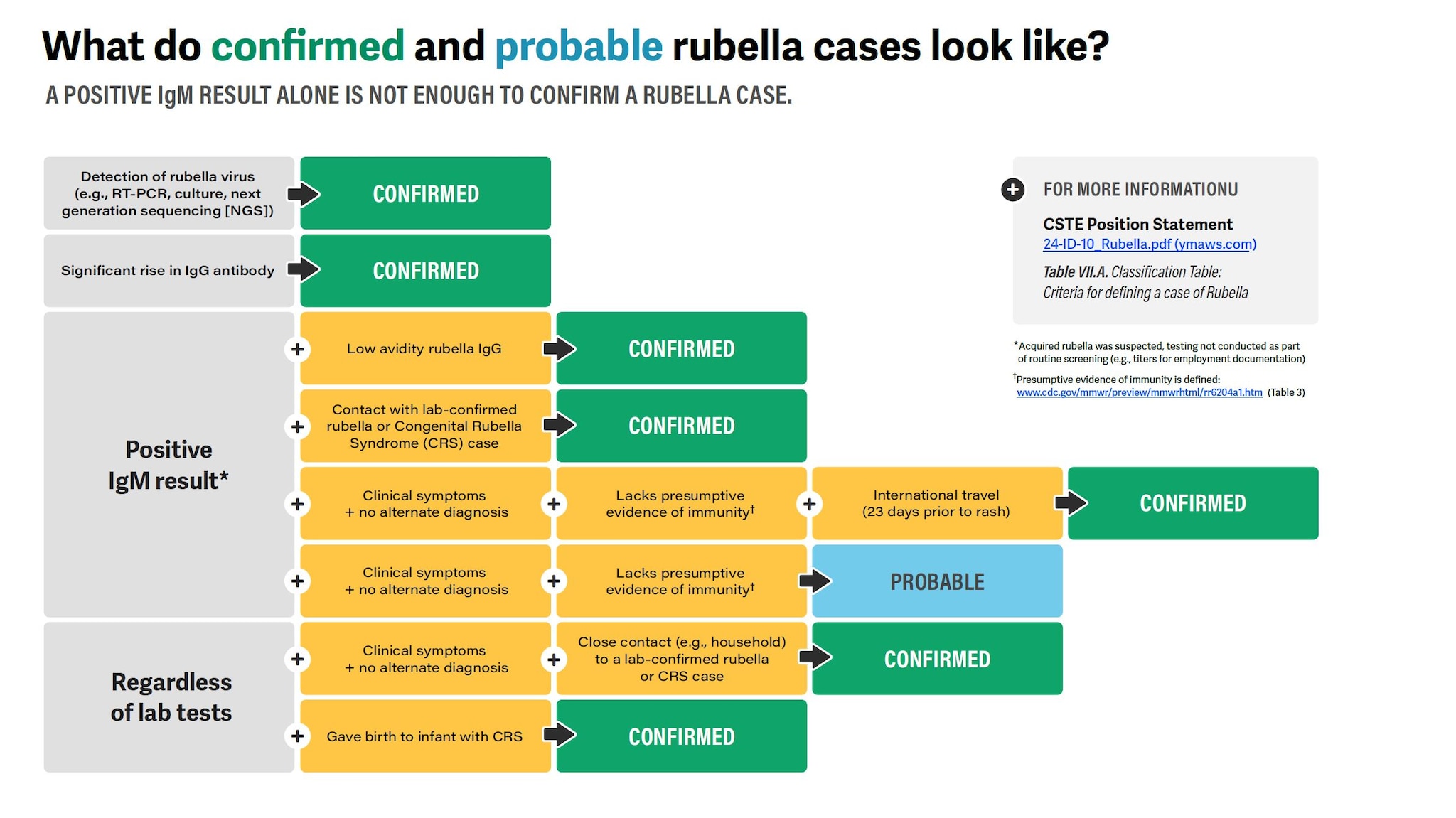About
During rubella investigations, health departments can download and use this flowchart to see how to classify confirmed and probable cases. This content is based on the 2024 Council of State and Territorial Epidemiologists (CSTE) rubella case definition.
Text equivalent
What do confirmed and probable rubella cases look like?
Below is a summary description of laboratory and epidemiologic linkage criteria to determine how to classify a case of rubella.
Confirmed case, if there is a:
- Detection of rubella virus by RT-PCR, culture, next generation sequencing (NGS).
- Significant rise in serum rubella immunoglobulin G (IgG) antibody levels.
- Positive serologic test for rubella immunoglobulin M (IgM)A antibody AND a low avidity rubella IgG.
- Positive serologic test for rubella IgMA AND contact with a lab-confirmed rubella or congenital rubella (CRS) case.
- Positive serologic test for rubella IgMA AND clinical symptoms with no alternate diagnosis AND lack of presumptive evidence of immunityB AND international travel in the 23 days prior to rash onset.
Regardless of lab tests, a case can still be confirmed for rubella if they have:
- Clinical symptoms with no alternate diagnosis AND close contact (e.g., household) with a lab-confirmed rubella or CRS case.
- Given birth to an infant with confirmed CRS.
Probable case, if there is a:
Positive serologic test for rubella IgMA AND clinical symptoms with no alternate diagnosis AND lack of presumptive evidence of immunityB.
For more information:
Read more about the rubella position statement in Table VII.A. Classification Table at 24-ID-10_Rubella.pdf (ymaws.com).
- Acquired rubella was suspected, testing not conducted as part of routine screening (e.g., titers for employment documentation)
- Presumptive evidence of immunity is defined at: www.cdc.gov/mmwr/preview/mmwrhtml/rr6204a1.htm (Table 3)

